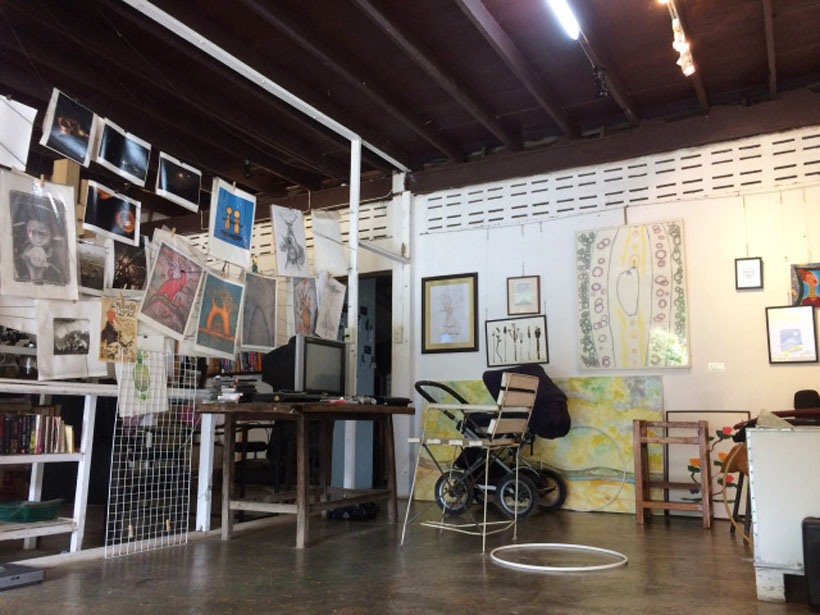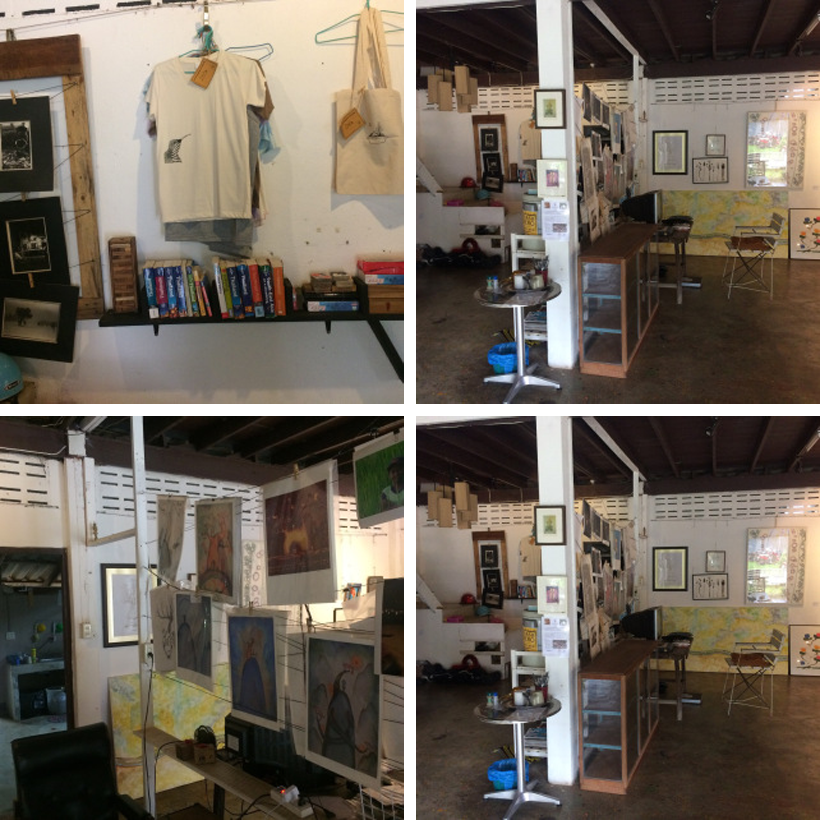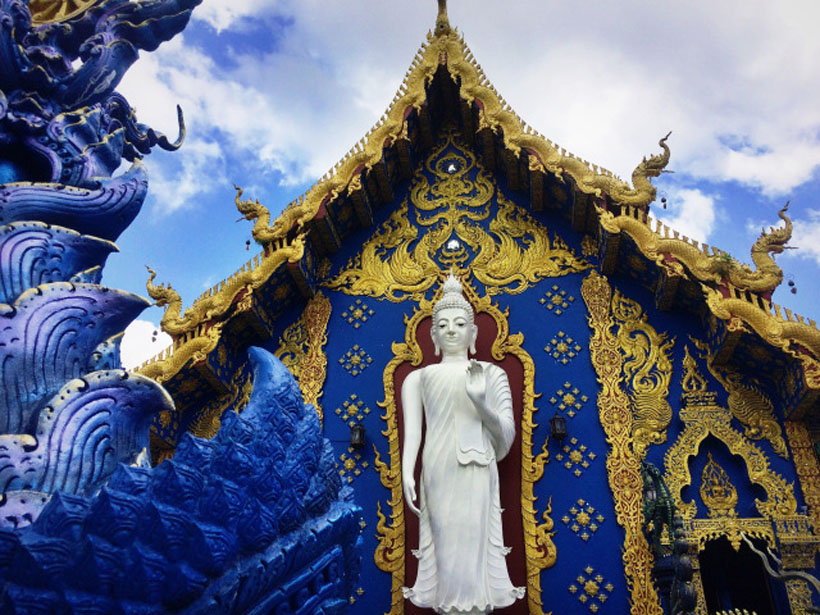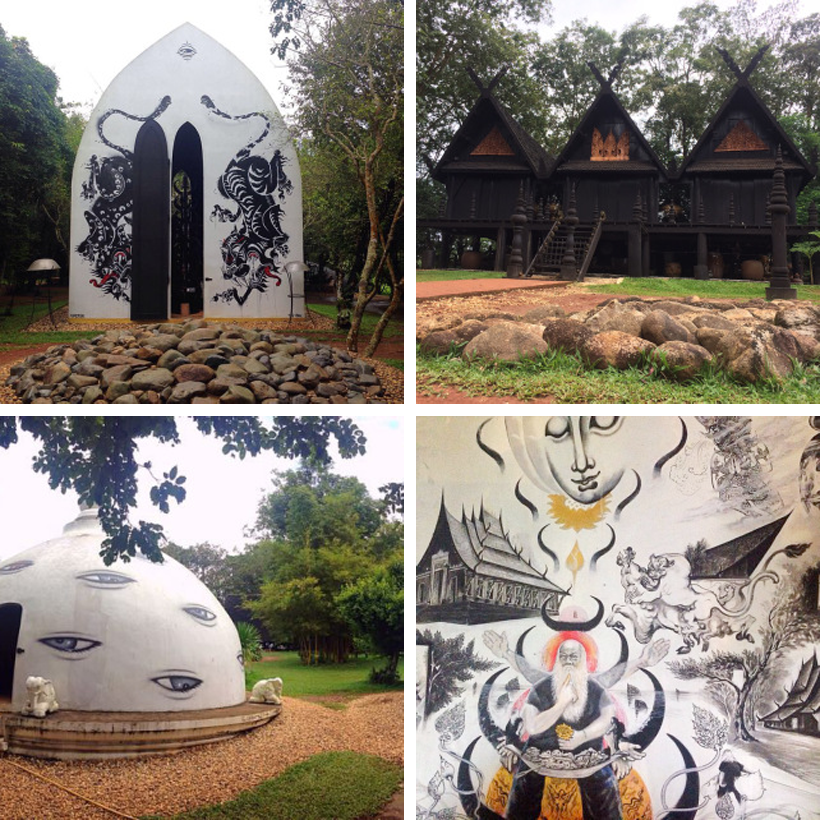Islands, full moon parties and beer… that’s all there is to Thailand, right? Wrong.
Before reaching the well trodden Thai backpacker path, I had been a little dubious about what type of culture I’d encounter. I am guilty of being that Western traveler who feared that all Thailand held for me was your typical tourist trail – just more beaches, beer and memorabilia. This image I’d conjured completely dissipated the moment I arrived in Pai.
“If you go anywhere in Thailand, make it Pai” – the wise words of fellow backpacker, Beth. So here I am, in the hippy highland town of northern Thailand. A place that is hundreds of miles from the coastal cries of “massage, massage”, far from buckets of cocktails and views of sunburnt Brits. Instead, I am surrounded by lush green fields, hoards of tie dye and heads of dreadlocks.
We are staying at Easy Guesthouse which, unbeknownst to us, is a hostel-come-gallery. The hosts are artists and musicians -their hostel, in turn, has become an extension of their creativity. The lounge is a space filled with futons, walls adorned with artwork and the sounds of guitar strumming. Since opening, Easy Guesthouse has also become a location for workshops that promote indigenous skills. The hostel oozes a relaxed, creative energy – an energy that is so at home in the hippy haven of Pai.
Backpackers often come here for a matter of days, yet manage to find themselves lost in the magic of the place weeks later. It was only when I was riding my bike through the rolling hills of Pai’s countryside that I began to understand why.



A typical day in Pai could begin with a meditation session, followed by a trip out to the Strawberry cafe, ending at a smoky acoustic night in the town centre. Even a trip to Boon Ko Ku So – a memorial bridge, and one of the most historic of sights in Pai – entails watching a Captain Jack Sparrow lookalike chasing across the wooden slats armed with a sword and face full of black eyeliner.
The quirky character of the town emanates a contagiously relaxed atmosphere. Charming little eateries – decorated with wall hangings, fairy lights and futon booths – invite you to join in the bohemian way of life as you sit cross-legged to enjoy vegan-themed Thai food. Whilst a walk through the night market could see buying hand crafted jewellery, rummaging through heaps of tie dye and tasseled clothing, or even sitting to get dreadlocks…

I finally managed to pry myself away from Pai and I thought my days of eccentric Thai arts and culture were over. I was wrong. It seems its creative ambience is infectious – spreading through the hills of northern Thailand, reaching the towns of Chiang Mai and Chiang Rai.
Touring Thailand can, at times, feel like a continual temple trail. But there was something rather unique about Chiang Rai’s many Wat’s, which seem to blend the importance of religion here in Thailand, with art and creativity. Wat Rong Khun (The White Temple), is a contemporary art exhibition that has been completed in the style of a Buddhist temple. The design completed by local artist, Chalermchai Kositpipat, is rich with symbolism.
The main building features a bridge that crosses over a lake of outreaching hands, intended to show unrestrained desire. The bridge teaches the way to happiness is to forego temptation. This creative display holds religious significance – whilst the site is also home to a meditation hall, an art gallery and living space for monks. The White Temple is an example of how Thai culture and faith have blended seamlessly with artistic talent and creation.


The newest addition to Chiang Rai’s exhibition temples, and my favourite, is Wat Rong Sear Tean (The Blue Temple). Designed by the student of Kositpitpat, the lesser known temple is adorned with yes, you guessed it, blue artwork. This artistic impression of a Buddhist temple displayed a truly unique style. Vivid blues and golds of the exterior are matched by the blue and pink hues of the psychedelic-style paintings inside, which frame a great white Buddha.

The finale was perhaps the most famous artistic museum in northern Thailand – Baan Dam, also known as The Black House. The grounds of the museum-come art studio is also the home of its creator, Thawan Duchanee. Nothing could really prepare me for the ‘Black House experience’. An eclectic mix of dark wooden outhouses and eccentric domes display an array of the local artist’s work. He explores themes surrounding Buddhist philosophy, including human desire, sickness and suffering, in a unique way – with the controversial use of animal skins, bones and furs. This dark imagery is paired with eerie atmospheric music to create a surreal and unconventional experience of Thai art.

The temples of Chiang Rai bring a creative element to the spiritual side of Thailand. Symbolism and artistic interpretation has led to a new wave of tourism – an innovative, creative and captivating temple trail experience. It’s this, along with the uniquely bohemian vibe of Pai, that has introduced me to the other side of Thailand – to its hippy haven of the north.
Words and images by Emily Baldwin.
